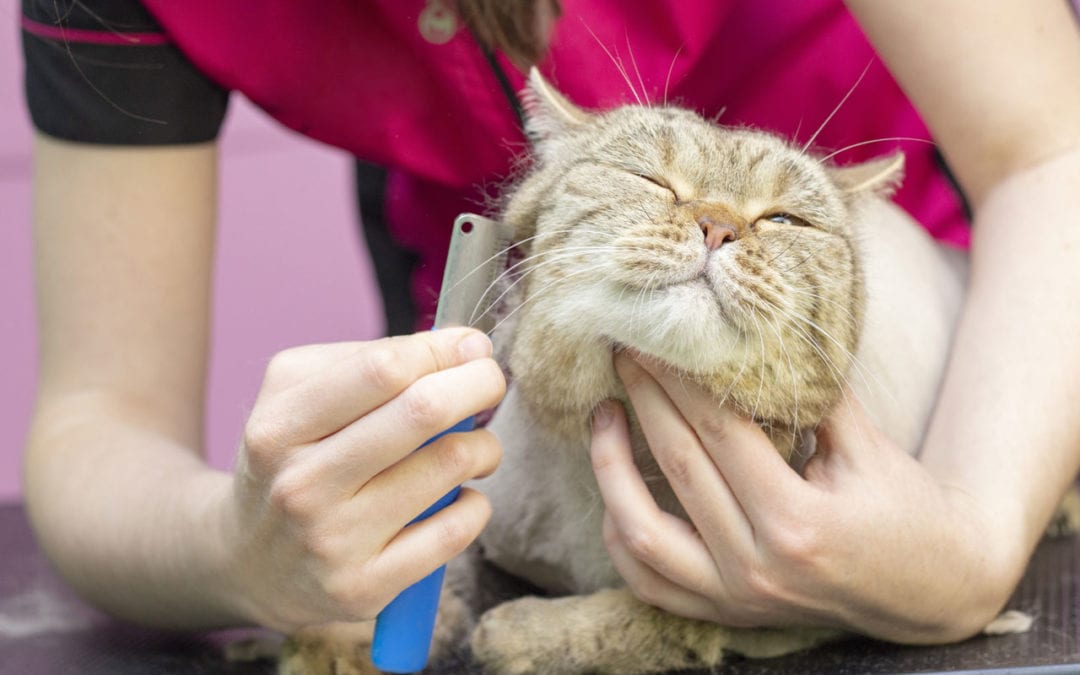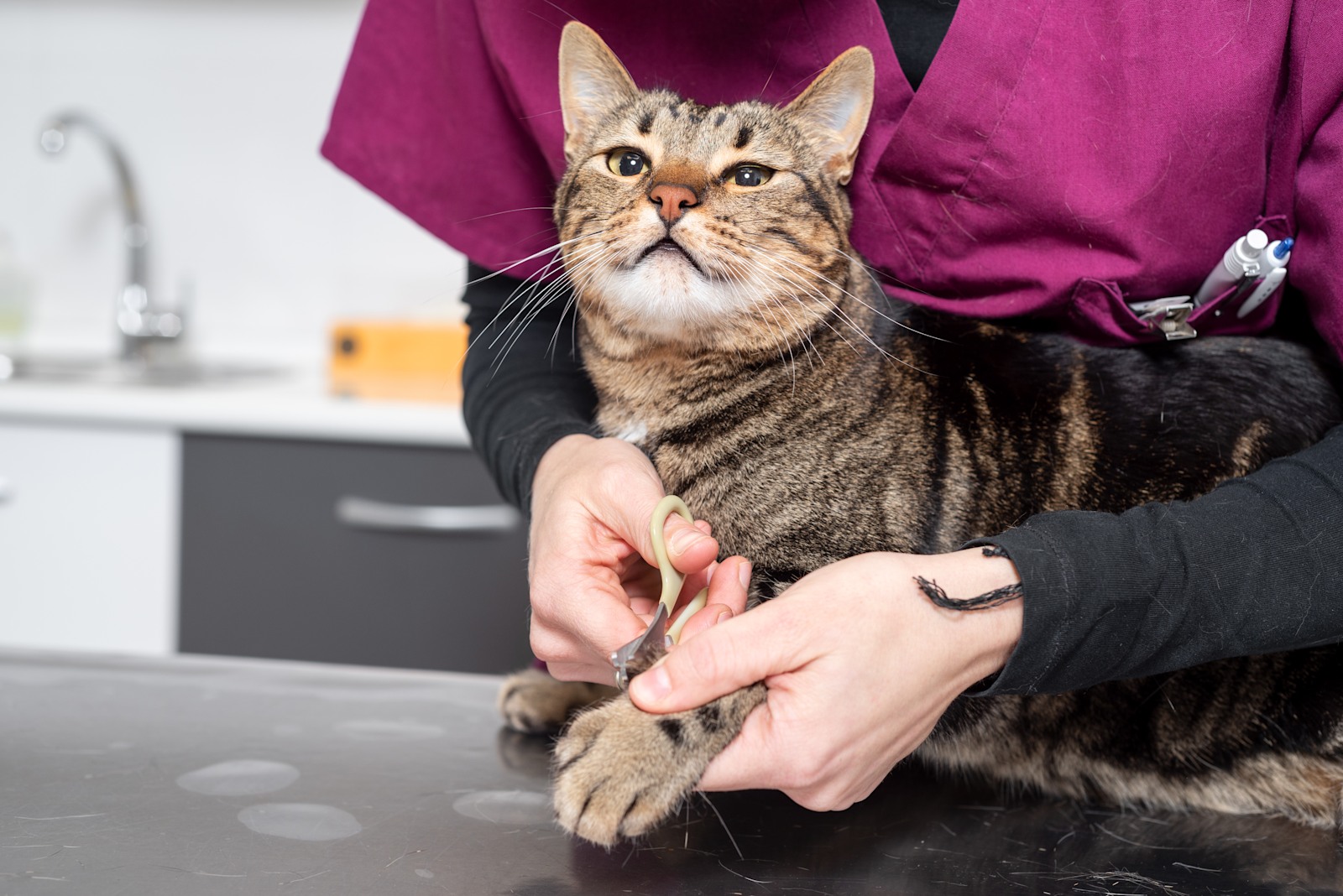Cat Grooming Tips
May 25, 2024
Cats are meticulous self-groomers, spending a significant portion of their day attending to their fur and hygiene. However, as a responsible cat owner, it's crucial to understand that regular grooming goes beyond what cats can accomplish on their own.
Grooming plays a pivotal role in maintaining not only your feline friend's appearance but also their overall health and well-being. By incorporating proper grooming techniques into your cat care routine, you can prevent various health issues, strengthen the bond with your pet, and ensure they lead a happy and comfortable life.
In this article, we’ll go over cat grooming tips that every pet owner should know to keep their furry companion in top shape.
Table of Contents
Bathing Your Cat
Bathing your cat can be a daunting task, but with the right approach and preparation, it can become a stress-free experience for both you and your feline friend. Follow this step-by-step guide to ensure a successful bath time routine for your cat.
Preparing for the Bath
- Gather Supplies: Before starting the bath, gather all necessary supplies, including cat-specific shampoo, towels, a non-slip mat for the tub, and cotton balls to place in your cat's ears.
- Trim Nails: Trim your cat's nails prior to the bath to minimize the risk of scratches.
- Tire Them Out: Engage your cat in play or exercise to tire them out before the bath, making them more likely to remain calm during the process.
Bathing Process
- Fill the Tub: Fill the tub with warm water to a depth of a few inches, ensuring it's not too deep to avoid overwhelming your cat.
- Place Cotton Balls: Gently place cotton balls in your cat's ears to prevent water from entering the ear canals.
- Wet Your Cat: Slowly lower your cat into the water, using a cup or pitcher to wet their fur thoroughly.
- Apply Shampoo: Dilute cat-specific shampoo according to the instructions and apply it evenly over your cat's coat, avoiding the head area.
- Rinse Thoroughly: Rinse your cat's fur thoroughly with clean, warm water, ensuring all shampoo residue is removed.
- Dry Your Cat: Use a soft towel to gently pat your cat dry, avoiding vigorous rubbing, which can cause discomfort.
Post-Bath Care
- Comfort and Reassurance: After the bath, provide comfort and reassurance to your cat with gentle praise and treats.
- Keep Warm: Ensure your cat stays warm after the bath by keeping them indoors in a cozy environment until fully dry.
- Monitor Behavior: Keep an eye on your cat for any signs of distress or discomfort after the bath, and consult your veterinarian if necessary.
Brushing Your Cat's Coat
Regular brushing is essential for maintaining your cat's coat and promoting their overall skin health. By incorporating brushing into your cat's grooming routine, you can remove dirt, debris, and loose hair, preventing mats and tangles while stimulating circulation and distributing natural oils for a healthy, shiny coat.
Benefits of Regular Brushing

Brushing your cat's coat regularly offers numerous benefits, including:
- Preventing Mats and Tangles: Regular brushing helps prevent mats and tangles from forming in your cat's fur, which can be uncomfortable and lead to skin irritation.
- Removing Loose Hair: Brushing removes loose hair from your cat's coat, reducing shedding and minimizing the risk of hairballs.
- Stimulating Circulation: Brushing stimulates circulation to your cat's skin, promoting overall skin health and encouraging the growth of healthy hair.
- Bonding Opportunity: Brushing provides an opportunity for bonding with your cat, strengthening your relationship and building trust.
Selecting the Right Grooming Tools
When selecting grooming tools for your cat, consider their coat type and length. For short-haired cats, a soft-bristle brush or rubber grooming mitt is suitable for removing loose hair and debris.
Long-haired cats may benefit from a wide-toothed comb or slicker brush to prevent mats and tangles. Additionally, de-shedding tools such as grooming gloves or furminators can help reduce shedding and maintain a healthy coat.
Proper Brushing Techniques
When brushing your cat's coat, follow these techniques for optimal results:
- Brush in the Direction of Hair Growth: Always brush in the direction of your cat's hair growth to avoid discomfort and minimize pulling.
- Start with Gentle Strokes: Begin brushing with gentle strokes, gradually increasing pressure as needed to remove tangles and mats.
- Focus on Problem Areas: Pay special attention to areas prone to matting, such as behind the ears and under the arms, ensuring thorough brushing to prevent mats from forming.
- Brush Regularly: Establish a regular brushing routine based on your cat's coat type and shedding patterns, aiming for at least a few times a week for short-haired cats and more frequently for long-haired breeds.
Nail Clipping
Regular nail trimming is crucial for maintaining your cat's health and preventing damage from scratching. Not only does it protect your furniture and belongings, but it also ensures your cat's nails remain at a safe length to prevent them from getting caught or causing injury.
Importance of Regular Nail Trimming
Regular nail trimming is essential for the following reasons:
- Preventing Damage: Clipping your cat's nails regularly helps prevent them from becoming overly sharp or jagged, reducing the risk of scratches to furniture, floors, and people.
- Maintaining Health: Long nails can curl into your cat's paw pads, causing discomfort, infection, or difficulty walking. Trimming them keeps your cat comfortable and prevents potential health issues.
- Strengthening Bond: By regularly handling your cat's paws and trimming their nails, you build trust and strengthen your bond with your furry friend.
Step-by-Step Instructions for Safe Nail Clipping

Follow these steps to safely clip your cat's nails:
- Prepare Your Tools: Gather a pair of cat-specific nail clippers, styptic powder (in case of bleeding), and treats to reward your cat.
- Choose the Right Time: Select a time when your cat is relaxed, such as after a meal or a play session.
- Handle Your Cat Gently: Approach your cat calmly and gently, stroking them to relax them before attempting to trim their nails.
- Expose the Nail: Gently press on your cat's paw pads to extend their claws, exposing the nail for trimming.
- Trim the Tip: Carefully trim the tip of each nail, avoiding the pink area known as the quick, which contains blood vessels and nerves.
- Offer Rewards: After each successful nail trimming session, reward your cat with treats and praise to associate the experience with positive reinforcement.
Tips for Acclimating Your Cat and Seeking Professional Help
- Gradual Introduction: Introduce nail clipping gradually by touching your cat's paws regularly and offering treats to create positive associations.
- Seek Professional Help: If you're uncomfortable trimming your cat's nails or your cat becomes stressed or aggressive during the process, seek assistance from a professional groomer or veterinarian.
Ear and Eye Care
Regular cleaning of your cat's ears and eyes is crucial for maintaining their sensory health and preventing infections that could lead to discomfort or more serious issues. By incorporating ear and eye care into your grooming routine, you can ensure that your cat's senses remain sharp and their overall well-being is preserved.
Importance of Regular Cleaning
- Preventing Infections: Regular cleaning helps remove dirt, debris, and excess wax that can harbor bacteria and lead to infections in your cat's ears and eyes.
- Maintaining Sensory Health: Clean ears and eyes are essential for optimal sensory function, allowing your cat to hear and see effectively.
- Early Detection of Problems: Routine cleaning provides an opportunity to inspect your cat's ears and eyes for any signs of infection, injury, or other abnormalities, allowing for early intervention and treatment.
Step-by-Step Instructions for Cleaning
Ear Cleaning:
- Gather Supplies: Prepare cotton balls or pads and a vet-recommended ear cleaner.
- Restrain Your Cat: Hold your cat gently but securely to prevent them from moving during the cleaning process.
- Apply Cleaner: Saturate a cotton ball with the ear cleaner and gently wipe the outer ear canal and ear flap, avoiding the ear canal's depth.
- Inspect for Signs of Problems: While cleaning, look for redness, swelling, discharge, or foul odor, which could indicate an ear infection or other issues.
Eye Cleaning:
- Prepare Solution: Use a pet-safe eye wash or saline solution recommended by your veterinarian.
- Hold Your Cat Securely: Gently hold your cat's head steady with one hand while using the other hand to apply the solution.
- Cleanse the Eyes: Moisten a cotton ball or pad with the eye wash and gently wipe away any debris or discharge from the corners of your cat's eyes, moving outward.
Signs of Ear and Eye Problems
- Ear Issues: Watch for symptoms such as head shaking, scratching at the ears, odor, redness, swelling, or discharge.
- Eye Problems: Look for signs like redness, swelling, discharge, squinting, excessive tearing, cloudiness, or changes in eye color.
